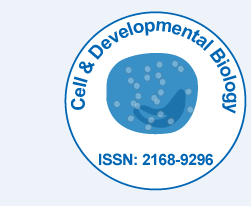
Cell & Developmental Biology
Open Access
ISSN: 2168-9296
+44 1478 350008

ISSN: 2168-9296
+44 1478 350008
Mini Review - (2020)Volume 9, Issue 2
Each day, each hour, each moment one of the foremost imperative occasions in life is going on in your body—cells are isolating. When cells separate, they make modern cells. A single cell partitions to form two cells and these two cells at that point isolate to create four cells, and so on. We call this handle "cell division" and "cell propagation," since modern cells are shaped when ancient cells partition. The capacity of cells to partition is special for living living beings.
Cell division; Nucleus; DNA; Mitosis; Meiosis
Where Do Cells Come From?
Cells separate for numerous reasons. For case, after you skin your knee, cells isolate to supplant ancient, dead, or harmed cells. Cells moreover separate so living things can develop. When living beings develop, it isn't since cells are getting bigger. Life forms develop since cells are dividing to create increasingly cells. In human bodies, about two trillion cells partition each day [1].
How Do Cells Know When to Divide?
In cell division, the cell that's isolating is called the "parent" cell. The parent cell isolates into two "daughter" cells. The method at that point rehashes in what is called the cell cycle [2].
Cells direct their division by communicating with each other utilizing chemical signals from extraordinary proteins called cyclins. These signals act like switches to tell cells when to begin isolating and afterward when to halt partitioning. It is imperative for cells to isolate so you'll be able develop and so your cuts recuperate. It is additionally vital for cells to halt partitioning at the proper time. In case a cell can not halt separating when it is gathered to halt, this will lead to a infection called cancer [3].
Duplication of the genetic material
Sometime recently a cell can partition, it must precisely and totally copy the hereditary data encoded in its DNA in arrange for its offspring cells to operate and survive. This is often a complex issue since of the incredible length of DNA particles. Each human chromosome comprises of a long twofold winding, or helix, each strand of which comprises of more than 100 million nucleotides (see over The nucleus) [4].
The duplication of DNA is called DNA replication, and it is started by complex proteins called DNA polymerases. These advance along the molecule, perusing the arrangements of nucleotides that are connected together to form DNA chains.
Types of Cell Division:
Prokaryotic Cell Division
Eukaryotic Cell Division
How Cells Divide?
Depending on the sort of cell, there are two ways cells divide— mitosis and meiosis. Each of these strategies of cell division has uncommon characteristics. One of the key contrasts in mitosis could be a single cell isolates into two cells that are copies of each other and have the same number of chromosomes. This sort of cell division is sweet for essential development, repair, and upkeep. In meiosis a cell separates into four cells that have half the number of chromosomes. Diminishing the number of chromosomes by half is imperative for sexual propagation and gives for hereditary differing qualities [5].
In eukaryotes the forms of DNA replication and cell division happen at distinctive times of the cell division cycle. Amid cell division, DNA condenses to make brief, firmly coiled, rodlike chromosomes. Each chromosome at that point parts longitudinally, shaping two indistinguishable chromatids. Each match of chromatids is separated between the two girl cells amid mitosis, or division of the core, a handle in which the chromosomes are moved by connection to a bundle of microtubules called the mitotic shaft.
Citation: Vennapu A (2020) Building blocks of LIFE. Cell Dev Biol.9:203. doi: 10.24105/2168-9296.2020.9.204
Received: 21-Jul-2020 Accepted: 23-Jul-2020 Published: 30-Jul-2020 , DOI: 10.35248/2168-9296.20.9.204
Copyright: © 2020 Vennapu A. This is an open-access article distributed under the terms of the Creative Commons Attribution License, which permits unrestricted use, distribution, and reproduction in any medium, provided the original author and source are credited.